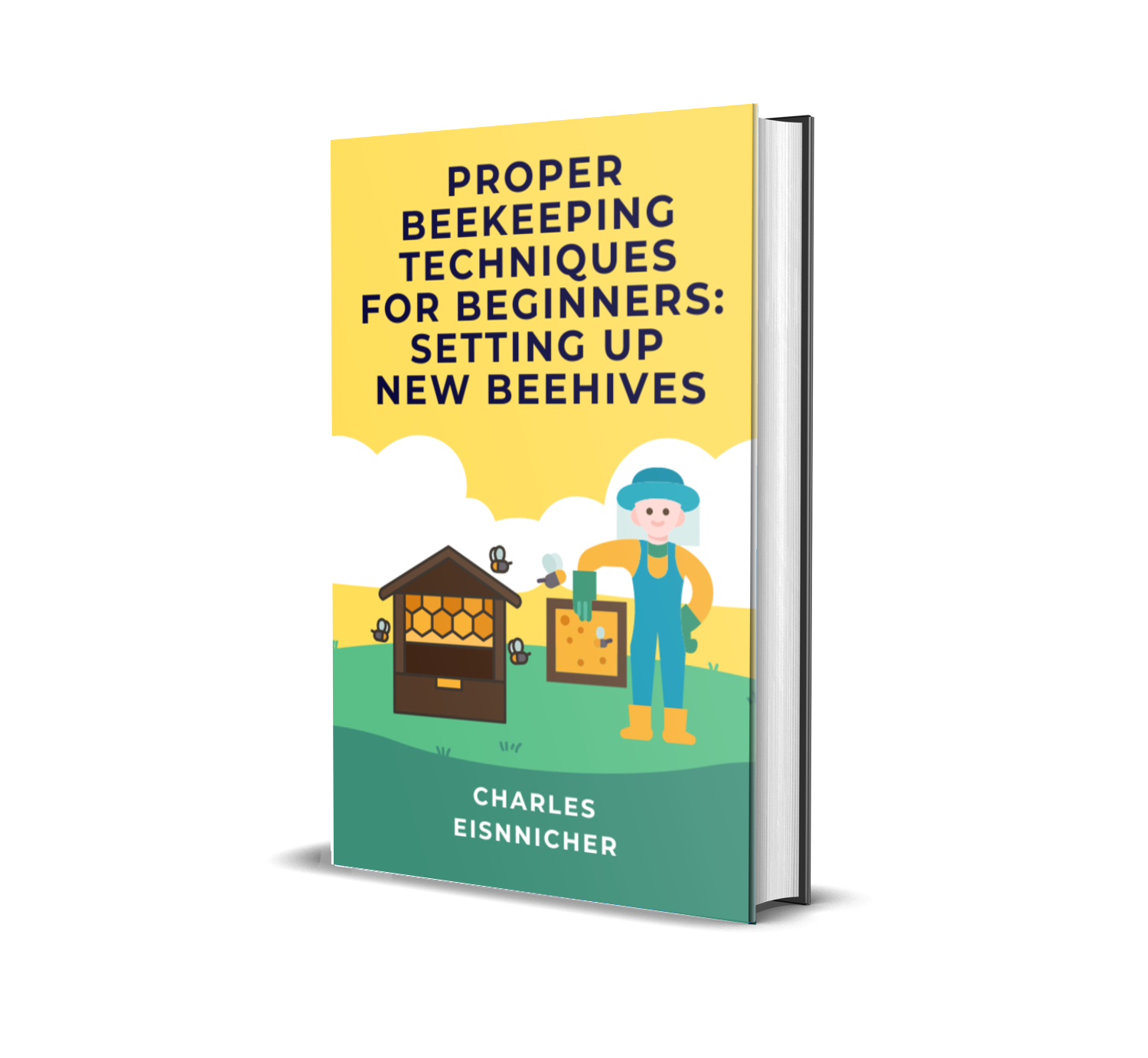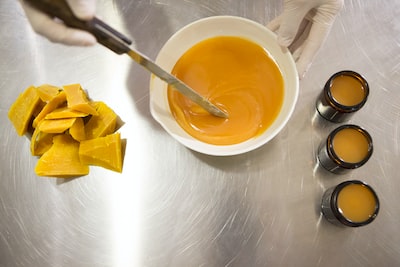A buzzing sound fills the air as the sun rises over the horizon – bees, busy at work in their hive, a Box Hive or Bee Box. By providing an alternative to traditional hives while maintaining species-appropriate conditions, this structure offers an outstanding opportunity for new beekeepers and everyday gardeners alike.
From managing a colony in an urban setting to creating an aesthetically pleasing look for handling bees in your backyard, the Bee Box is a rising star in the beekeeping industry.
Get ready to start generating your own sweet, all natural honey! In this article we are going to walk you through the steps of constructing your very own bee box – with little effort and materials! Plus, taking control of your own bee box provides wonderful benefits, such as having access to an unlimited supply of honey! But before delving into the topic of construction, let’s address a few reasons why it’s so important to let bees thrive.
Table of Contents
Benefits of Creating Your Own Bee Box
Creating your own bee box has many benefits. It is a great way to encourage bee health, as well as increase bee numbers in your local area.
Bee boxes provide a safe, yet inspiring environment for these humble creatures to call home. When bees find a good home they will continue to return to that spot, thus helping to increase the bee population in your area.
Additionally, the presence of bees will attract other beneficial insects to the area, thereby creating a more diverse, healthy habitat. The number of bees able to co-exist in a bee box is limited and so by creating your own bee box, you can ensure that there is a place for them to reside without overcrowding.
Additionally, since bee boxes are typically sheltered from unfavorable weather such as excessive wind or heavy rain, the bee resident’s survival rate will be limited, meaning the entire bee box can be watched and protected more easily. Finally, the lovely presence of bees and the production of honey can create a relaxing, outdoorsy atmosphere in any backyard or garden.
With all these benefits, creating your own bee box seems to be an activity worth considering.
Gather Supplies for Building Your Bee Box
To build your bee box, it’s essential to gather your supplies first. First and foremost, you’ll need to purchase a beehive body and 10 wooden frames.
In addition, you’ll need nails, screws, foundation, and varnish to assemble the framework. Further supplies include mesh, hive wire, paint, and wood glue to help protect your hive.
Finally, consider a lid, bottom board and inner cover to waterproof and keep the hive properly ventilated. Remember to purchase enough supplies to build multiple beehives in case of any mistakes.
With everything on hand, you’re now ready to build your bee box!

Get A Free Downloadable Ebook To Teach You How To Set Up New Beehives
Give Me My Free eBookDesign Considerations for Your Bee Box
When designing a bee box, there are several factors to consider. Size is a critical element: too large or small and your bee box won’t be efficient.
Make sure you match the size of your bee box to the number of bees you’ll house. Adequate ventilation is important too, to provide fresh air and to moderate temperatures within your box.
Positioning your bee box in an area that receives morning sun can help bees get an early start on the day. Providing a landing pad at the entrance of your bee box can also help ensure bees can easily enter the space.
Finally, surfaces within the bee box should be smooth, as bee feet can be injured by rough or jagged surfaces. By taking these design considerations into account, you’ll be on your way to building a successful bee box!
Constructing Your Bee Box
Constructing a bee box should never be done by those who lack experience and knowledge in dealing with bees. After having the necessary tools and supplies, the first step to constructing a bee box is to accurately measure and make a precise cut of the wooden slats.
Once the cut is done, the pieces need to be arranged and connected in the correct order to provide support. Next, screws should be used to connect the fasteners together.
To complete the construction, a roof needs to be added to the box. This roof should be specially designed to protect the bees but still allow enough access for the bees to enter and leave.
Through the combination of precise measurements, correct arrangement of the pieces, and a requisite understanding of the needs of bees, the construction of a bee box will ultimately be a success.
What Type of Bees You Should Get
If you’re looking to set up your own backyard bee hive, you should consider what type of bee you should purchase. There are several different varieties to choose from, so you’ll want to familiarize yourself with their characteristics beforehand.
Carniolan honey bees are known for their gentle disposition and good wintering ability, while Italian honey bees are known for their increased production of honey. Russian bees are also available, and they are better fit to resist mites, predators, and disease.
It’s important to research each type of bee to determine which best suits you and your situation before making a purchase decision.
Attracting Your Bees to the Bee Box
One can easily attract bees to their bee box by providing a safe, attractive and sheltered environment. Light-colored boxes, placed in a sunny and sheltered area, can provide a welcome home for new bee colonies and will help to keep them safe from predators.
Additionally, placing flowering plants in or near the bee box can help encourage bee activity and create a suitable environment for bees to feed and socialize; plants such as rosemary, mint and lavender will provide bees with the pollen they need and will make them want to live in your bee box. Finally, make sure to provide your bees with a water source, such as a shallow dish of sand and water, which they can use to cool down on hot summer days and stay hydrated.
By providing these necessities, you’ll be sure to attract bees to your bee box and be one step closer to building a healthy, vibrant bee colony.
Establishing a Healthy Bee Box Environment
Creating a favorable environment for honey bees starts with the box they call home–the bee box. To ensure a healthy bee environment, the bee box must have the proper ventilation, free from drafts and excessive moisture, with consistent temperatures between 85-95 degrees Fahrenheit.
The hive itself is important, too; made of wood, insulation, and a protective sheet of wood or aluminum wrap, it must be designed to protect the bees from adverse weather. Finally, adequate space and resources must be provided–nectar, honey, and pollen in the right amounts, along with fresh water sources nearby–for the bees to happily sustain their colony.
Caring for and Monitoring Your Bees
Beekeeping is an enjoyable and rewarding experience that requires mindful care and monitoring. You’ll want to keep an eye out for any varroa mites, which feed on the fat and hemolymph in bees, or emerging diseases like American Foulbrood, and keep your bees well-fed and sheltered.
Timely monitoring of your hive(s) is key to prevent any problems that might arise, as catching anything early can make all the difference. Make sure to inspect your bees often, providing them with the resources and protection they need to thrive.
Beekeeping doesn’t end after you assemble the hive; your diligence and dedication is what will help your bees survive the long haul.
Harvesting Your Sweet, All Natural Honey
Harvesting your sweet, all natural honey can be a wonderfully rewarding process. When the right conditions exist and diligent care has been taken to maintain the health of the hive and its bees, the end-result can be an abundance of the sweet, nutritious nectar that has been gathered from the blooms of many different plants.
Gathering honey is not a task for the weary; it requires time, patience, and the proper tools and supplies. A healthy, strong hive requires almost constant monitoring, and the proper protective gear is a must for any person wishing to harvest honey.
A smoker and uncapping knife may also be necessary, depending on the set-up. With several frames of honey ready, the beekeeper carefully harvests the liquid gold, extracting it from the comb, and allowing it to be placed into clean containers of his or her choosing.
After the honey is strained and boiled (if desired), it can be jarred and sealed to ensure cleanliness, freshness, and sweetness long into the future.
Helpful Tips for Creating a Bee Box
Creating a bee box is a great way to help promote bee conservation. To make your bee box, you’ll need some basic materials, like wood and nails, and a few specialized materials.
Start by using a plan or blueprint to build your bee box. Make sure that the hives are facing south and that they are at least 14-inches off the ground.
Also, the bee box should be painted with a light color. Once you have the bee box made, it should have an inner cover and a lid.
You can then add an entrance reducer and a secure queen excluder to the bee box. This will make sure that the queen bee cannot escape from the hive.
Finally, provide the bees with a fresh source of water nearby and they will start to create their home. With these tips and your hard work, you can create a perfect bee box and help the bee population.
Takeaway
The bee box is the perfect way to bring the joy, wonder, and fragrance of beekeeping into your own home. The bee boxes are easy to set up, and you can enjoy these buzzing beauties with virtually no worry of getting stung, as the bees are quite far away.
Beekeeping is a great way to learn about the complex and fascinating world of pollination, and get you a little closer to nature. Giving a bee box as a gift or having one for yourself is an experience like no other.
Not to mention, the sweet honey is an added bonus! Bee keeping is an enjoyable and rewarding hobby that is sure to keep you fascinated while supplying you with all the sweetness of nature itself. With a bee box, you can turn any balcony, garden, or backyard into a little oasis of vibrant, buzzing activity – and maybe even a taste of fresh honey!
Charles

Get A Free Downloadable Ebook To Teach You How To Set Up New Beehives
Give Me My Free eBook







